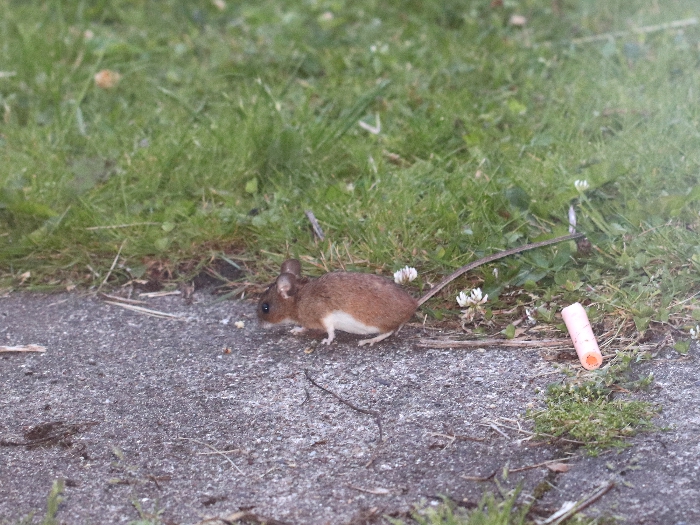Scientific name: Apodemus flavicollis
Family: Muridae
Appearance: The Yellow-necked Mouse is larger than the Wood Mouse with an orangey-brown coat above and white underparts. It has a band of yellowish fur which runs across its chest which gives it its name and is its distinguishing feature. It also has larger ears, more bulging eyes and a longer thicker tail than the Wood Mouse.
Size: Head and body 9.5-12 cm; Tail 8-11 cm; Weight 14-45 g.
Natural history: The Yellow-necked Mouse is largely nocturnal and generally inhabits mature, deciduous woodland. It is confined to the southern half of Britain from Dorset to Kent and Suffolk and the Severn Basin from Gloucestershire to Staffordshire. It is an excellent climber and forages both on the ground and in the canopy. The diet of the Yellow-necked Mouse consists mainly of tree seeds, but it will also take fruit, buds and some insects. The breeding season runs from February to October and females will have up to three litters a year each containing an average of five young. The juveniles are born blind and naked the eyes opening after around 13-16 days.

(C) Donald Hobern (shared under a CC BY 2.0 license)

 English (United Kingdom)
English (United Kingdom)  Czech (Čeština)
Czech (Čeština)  Nederlands (nl-NL)
Nederlands (nl-NL)  Magyar
Magyar  Deutsch (Deutschland)
Deutsch (Deutschland)  Croatian (Hrvatski)
Croatian (Hrvatski)  Polski (PL)
Polski (PL)  Español (España)
Español (España)